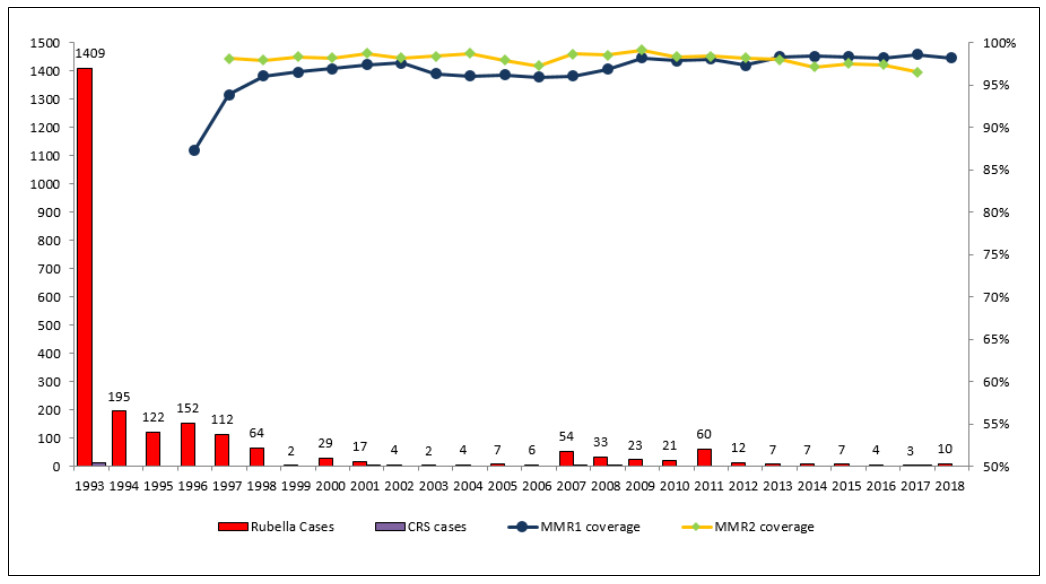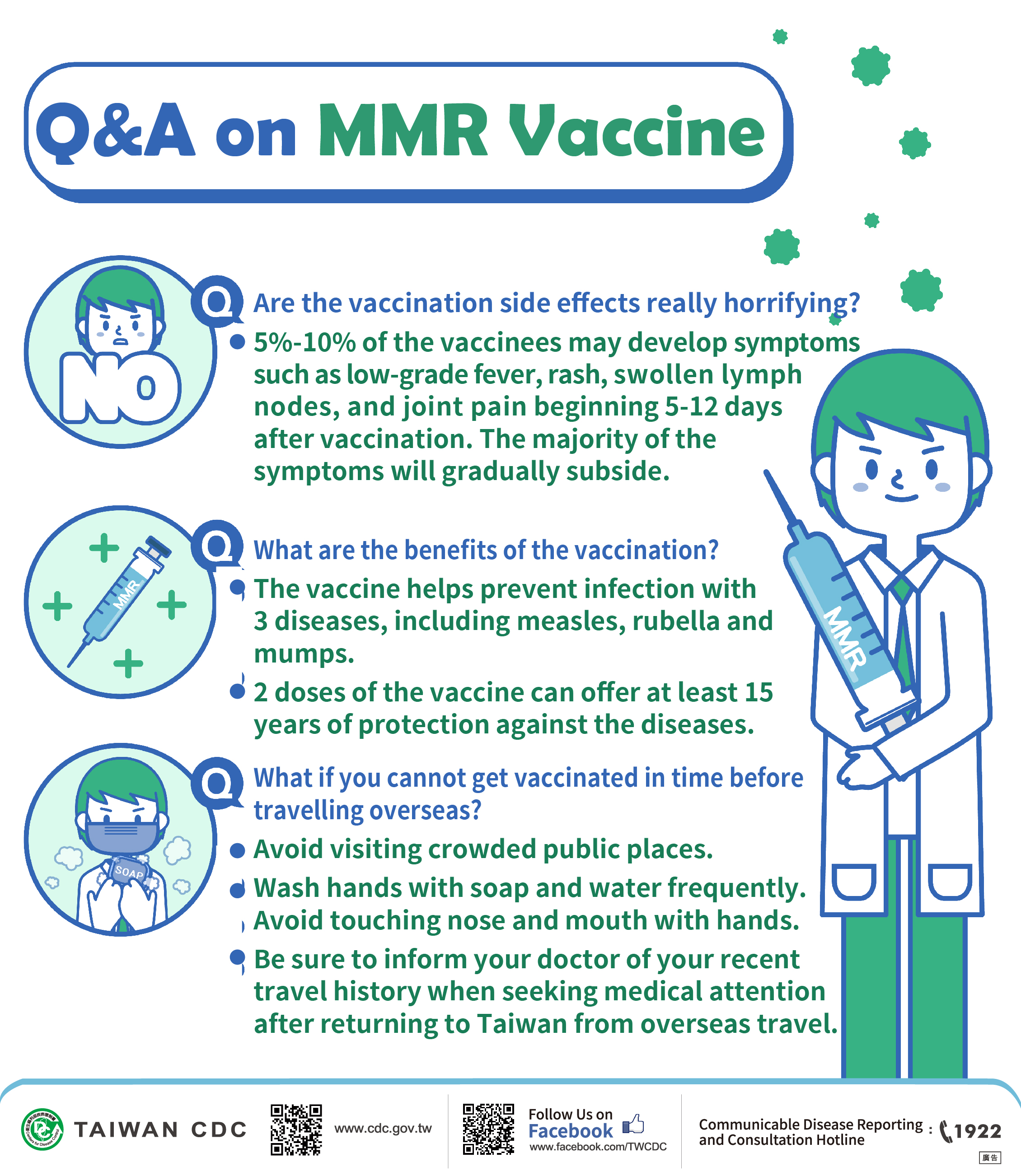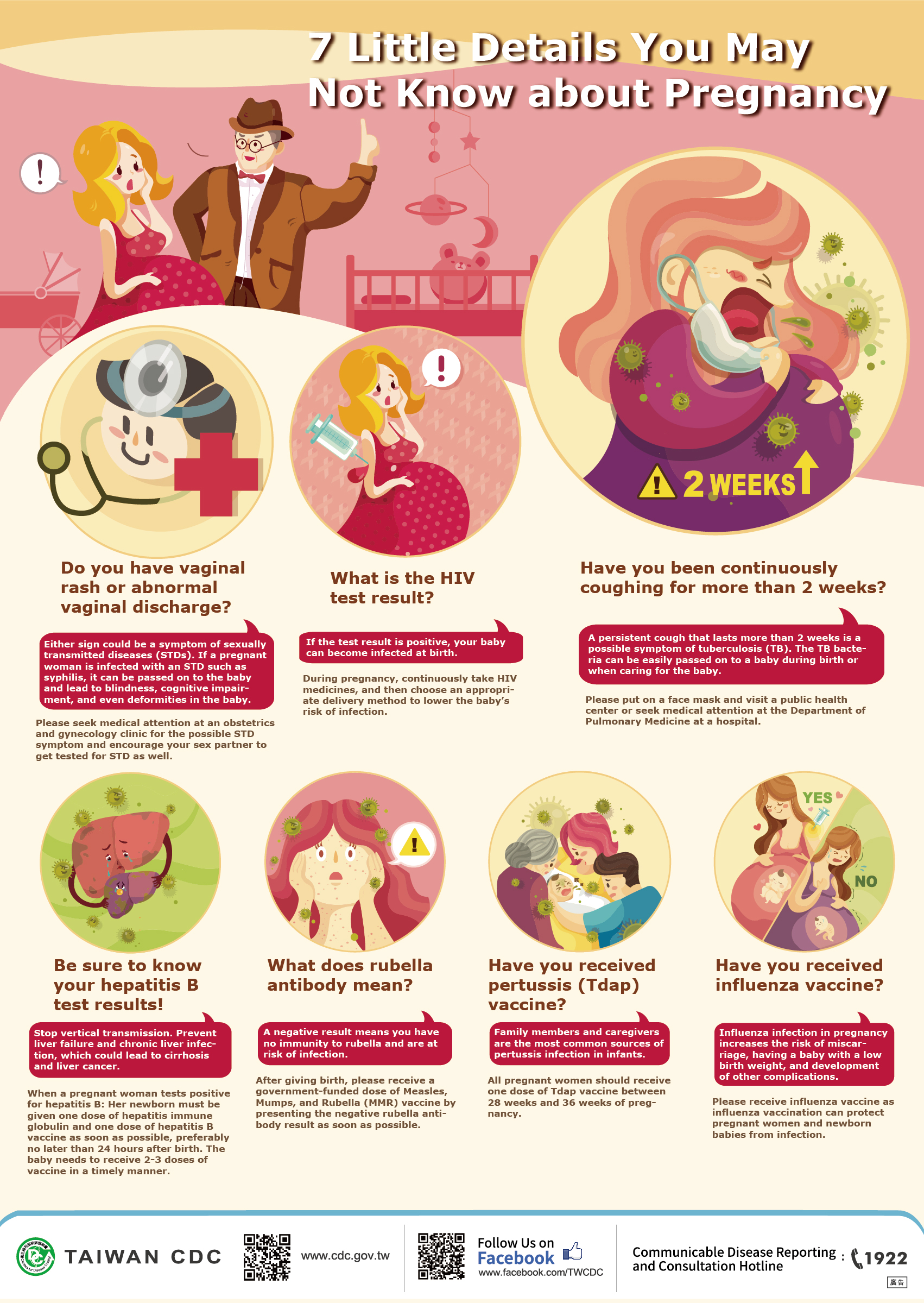Rubella(CRS)
Background
Rubella is a contagious viral disease, which occurs most often in children. The virus is transmitted via the respiratory route, and symptoms usually appear 2–3 weeks after exposure. In children, the disease is usually mild, with low fever, nausea and a transient rash. Adults may develop arthritis and painful joints. The most infectious period is usually 1–5 days after the appearance of the rash. Infection during early pregnancy may cause fetal death or congenital rubella syndrome (CRS), which is characterized by multiple defects, particularly to the brain, heart, eyes and ears. There is no specific treatment for rubella. The disease can be prevented by immunization.
The rubella virus is transmitted by airborne droplets when infected people sneeze or cough. Humans are the only known host. Children with CRS can suffer hearing impairments, eye and heart defects and other lifelong disabilities, including autism, diabetes mellitus and thyroid dysfunction – many of which require costly therapy, surgeries and other expensive care. The highest risk of CRS is in countries where women of childbearing age do not have immunity to the disease (either through vaccination or from having had rubella). Before the introduction of the vaccine, up to four babies in every 1000 live births were born with CRS.
In Taiwan, rubella had been listed as a reportable disease since 1988. A program to eradicate poliomyelitis, measles, rubella, congenital rubella syndrome (CRS), and neonatal tetanus (NT) was initiated in 1991. Through the implementation of the eradication program, the quality of the surveillance system was significantly strengthened and the vaccination coverage of rubella containing vaccine was notably improved. Beginning 1998, Rubella has been brought under effective control in Taiwan.
Epidemiology
The rubella vaccine was introduced to Taiwan in 1986 for the third grader of junior high schoolgirls. In 1992, Taiwan CDC implemented universal vaccination of MMR vaccine to 15-month-old children. From 2001, Taiwan CDC began to provide the second dose of MMR regularly for 7-year-old children when they enter elementary school. After the implementation of MMR vaccine to 15-month-old children regularly and the eradication program for poliomyelitis, neonatal tetanus, congenital rubella syndrome and measles was implemented in 1991 and two rounds of catch-up campaigns (1992-1994 and 2001-2004) were enforced of to intensify the surveillance system and to improve the vaccination coverage rate. The rubella cases reduced significantly. Since 1998, less than 60 confirmed rubella cases were reported annually (Figure 1). From 1994 to 2008, five cases of congenital rubella syndrome (CRS) have been confirmed. Four of five patients’ mothers were foreigners. No confirmed CRS case was reported from 2009 to 2016. In 2017, one CRS case born to a foreign mother was confirmed through CRS active surveillance. In 2018, there were no confirmed CRS cases.

Figure 1: Rubella cases and immunization coverage in Taiwan from 1993 to 2018
Rubella (CRS) Surveillance in Taiwan
Taiwan National Infectious Disease Statistics System-Rubella (Congenital Rubella Syndrome)
Prevention and Control
- Maintaining high vaccination coverage rate for MMR1 and MMR2.
- Enforcing the follow-up and management of unvaccinated individual to eliminate risk of virus introduction.
- Connecting the National Immunization Information System (NIIS) and National Immigration Agency’ data to follow up the unvaccinated high risk children.
- Strengthening the management of health examination of foreigners.
- Strengthening the surveillance system and emergency response.
- Establishing well-organized standard measles control guideline.
- Intensifying the education of physician for the rubella diagnosis and notification definition.
- Making vaccination recommendations for high risk population.
FAQs
- Do people in Taiwan still get rubella?
- Yes, but it's not very common. That's because most people in Taiwan are protected against rubella through vaccination. Each year less than 60 people in Taiwan are reported to have rubella.
- What is the routine children vaccination schedule of rubella?
- The first dose of MMR:12 months of age, The second dose of MMR :5 years.
- Why do people still get rubella in Taiwan?
- When unvaccinated Taiwanese or foreign visitors get rubella while they're abroad, and then bring the disease into Taiwan. They can spread rubella to other people who are not vaccinated, which sometimes leads to outbreaks.This can occur in communities with unvaccinated people. In recent years, most rubella cases were imported/non-imported sporadic cases or local-limited transmission caused by imported cases in Taiwan
- Who are the high risk group of rubella infection?
- Infants under 1 year and unvaccinated children.
- Health care workers.
- People who travel to high-risk areas.
- People who come into frequent contact with foreign travelers.
- What are the vaccination recommendations for non- routine vaccination population?
- Infants aged 6 through 11months should get 1 dose of MMR vaccine before departure Taiwan to high- risk areas.
- The pregnant that those who had negative rubella antibodies should get 1 dose of MMR vaccine after births.
- Young adults born after 1981 without measles immunity should get one dose of MMR vaccine before traveling to high-risk areas.
- Health care workers born after 1981 without measles immunity should get one dose of MMR vaccine.
- People born after 1981 without measles immunity and have frequent contact with foreign travelers should get one dose of MMR vaccine.
- People born after 1981 without measles immunity and care for infants who have not been vaccinated with MMR should get one dose of MMR vaccine.
- *Immunity requirement against measles: MMR vaccination record with 2 doses and the last dose shall be within the past 15 years, or having measles Ig G antibody after being tested within the past 5 years.
- What is the regulation of health examination for foreigners applying for a residence or settlement?
- All foreigners applying for a residence or settlement are required to submit an antibody positive of measles / rubella report or immunization certificate. Also, the physical check for foreign laborers before entry has included an item of “an antibody positive report of measles/ rubella or the immunization certificate.”
Resources
- WHO
- WPRO
- The Measles & Rubella Initiative
- USCDC l Measles (Rubella)
- MMWR-Related MMWR Articles
- WER
- Eurosurveillance
Images



